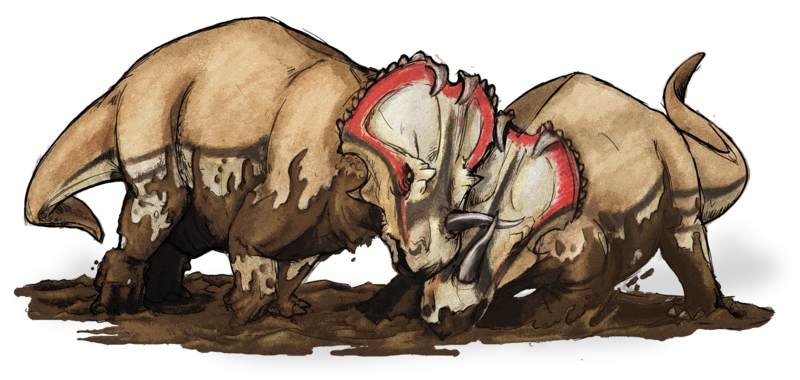Make no bones about it, dinosaurs were warm-blooded, new research has revealed.
Palaeontologists have claimed for many years that dinosaurs, like their modern-day reptile decendents, were cold-blooded. Part of their argument stems from features called 'lines of arrested growth', or LAGs, which are found in both dinosaur fossils and modern reptiles and, like tree-rings, chart the rates of bone growth in the animal.
dinosaurs, like their modern-day reptile decendents, were cold-blooded. Part of their argument stems from features called 'lines of arrested growth', or LAGs, which are found in both dinosaur fossils and modern reptiles and, like tree-rings, chart the rates of bone growth in the animal.
In modern reptiles and amphibians, these LAGs correspond to periods of low temperature, such as winter, when metabolic rate falls and growth slows. Conversely, it had been widely accepted that, because they are warm-blooded and therefore maintain a high metabolic rate all year round, mammals don't develop LAGs.
But, more recently, the LAGs described in dinosaur bones appear to be subtley different to the modern reptilian form, and examples of LAG-like structures have also been reported for some mammals.
"This prompted opposing hypotheses and conjectures," says Universitat Autonoma de Barcelona scientist Meike Kohler and her colleagues in a paper in Nature this week. "However, much of the debate stems from a lack of detailed, methodical study on extant endotherms [modern-day warm-blooded animals] on which to base inferences regarding extinct vertebrates."
So Kohler and her colleagues have assembled data including bone analyses as well as climate records and metabolic activity logs from over 100 ruminant animals ranging from 3-kilogram-antelopes to one-tonne-elands that are native to 36 African and European locations. Crucially, the animals inhabit a broad range of latitudes enabling the effects of climate extremes on the animals' bones to be studied.
"LAGs are universally present in all climatic regimes, from high and cold to low and hot latitudes," the team report. "They form annually in the fast-growing highly-vascularised fibrolamellar bone tissue of ruminants of all body sizes resulting in a bone tissue pattern typically found in all dinosaurs..."
Then how do we account for them? The answer lies in looking at how the animals' physiological responses to changes in climate. At times of stress, when it is very dry and or cold, the animals compensate by altering their metabolic rates, including lowering body temperature, to conserve energy. "Growth arrest," the resereachers suggest, "forms part of this strategy."
The fact that modern-day ruminants show the same cyclical patterns of bone growth as dinosaurs once did suggests that this is part of an ancient process that still operates today. But, even more intriguing, it also proves that, just because dinosaurs' bones contain LAGs, they weren't necessarily cold blooded.
This resonates with previous studies that have modelled metabolic rate and dinosaur locomotion to argue that T. rex et al. weren't all just cold-blooded killers. Killers, yes. Cold-blooded, probably not.
- Previous Why one heart attack begets another
- Next News from the RAS










Comments
Add a comment